No products in the basket.

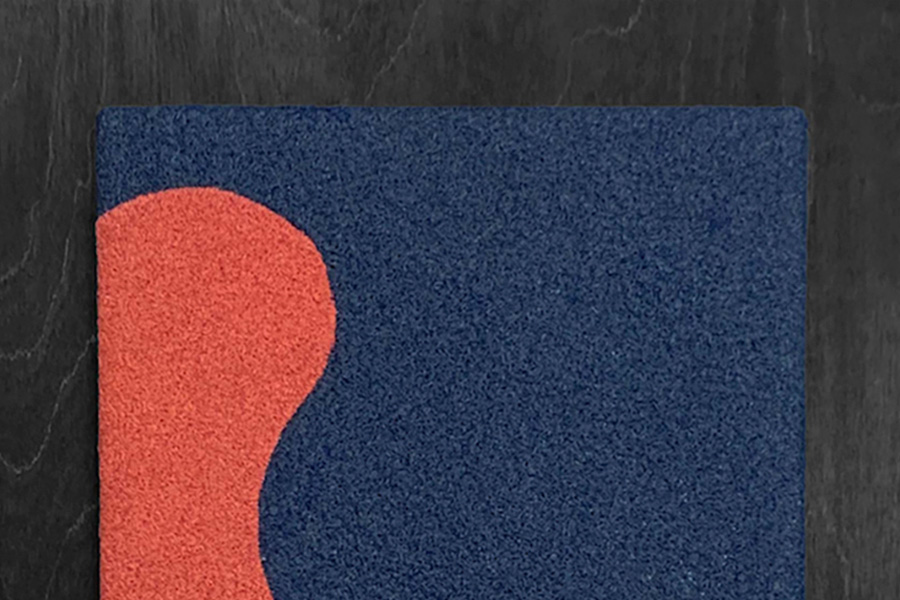
With years of experience in the art world artist JPR Stitch (Dr Jack Roberts) only started focusing on creating his own work when the pandemic hit. Choosing the medium of sewing and stitching was in the end a natural choice but the process of getting there was quite traumatic. Here JPR Stitch explains more..
Can you tell us your backstory and how you got into the art world?
My journey in the artworld started about 15 years ago but my journey as an artist is a more recent thing – I have been involved in the art world for quite a while but for most of this time I didn’t make much art.
I did make art in my undergraduate degree but then moved away from making – my Master’s degree was in Arts and Museum Management and my PhD looked at the artist-dealer relationship within the high-end contemporary art market. Aside from education, for nearly 15 years, in some way or other, I have worked in the art world, I have had a portfolio career which has included – running a nomadic gallery where I represented artists; operating as an art dealer (specialising in post war prints); co-running a community arts organisation; working with arts charities helping them gain arts funding; and the list goes on.
I have also lectured at universities and conferences around Europe on topics such as the art world and the art market. I have been involved in the art world for many years, but only relatively recently did I come back to making my own work.
Like many people, the ‘stop’ of the pandemic gave the space to jump off the treadmill and re-evaluate. I had wanted to make art for a long time but with everything else I was doing, I never really had the time or head space to do it – creating art (or thinking through ideas) was something I only did in evenings, at weekends, or on holidays. The pandemic gave me the chance to have a total shake up – I stopped a lot of what I was doing and went full-time into making my art.
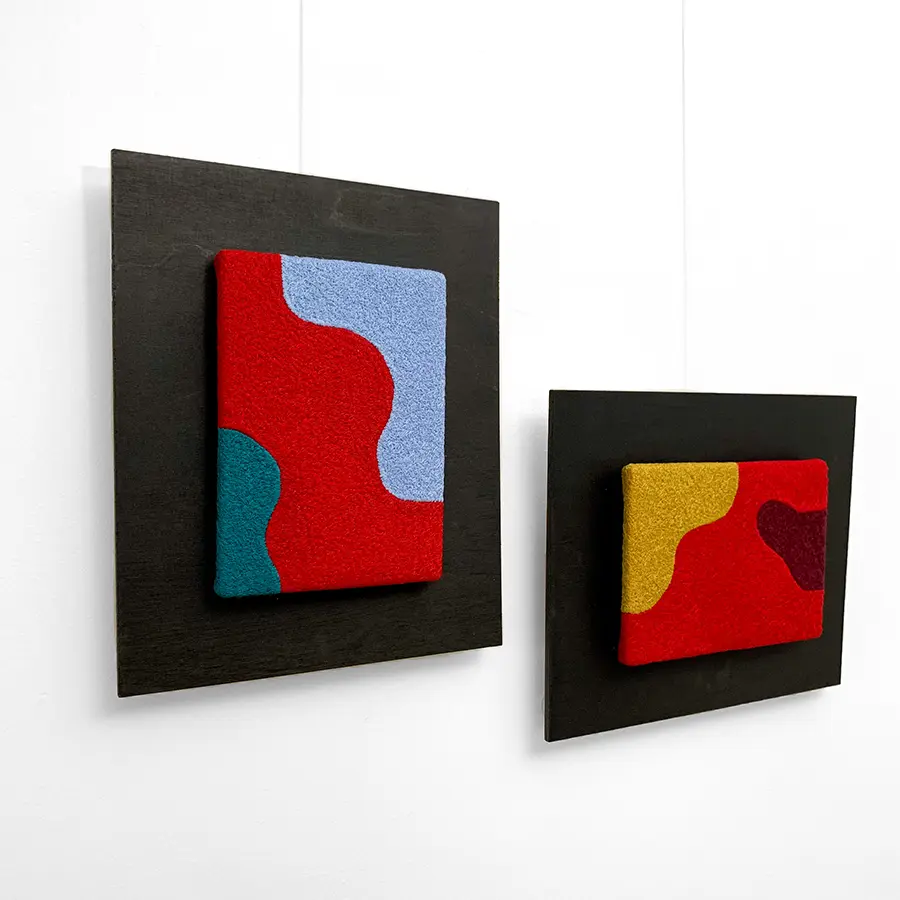
How did you discover the stitching technique and why did you choose it over other media?
How I came to my current way of working was a somewhat traumatic process – I stopped a lot of the ‘work’ I was doing so that I could focus on creating. I was however stuck in a quandary of what to make. The academic background always made me feel like I needed to have a deep justification as well as a philosophical and theoretical backing for what I was making.
For a few years before this, I was making art sporadically in my spare time that examined the art world, its structures and its multiple value systems – some was pen and ink, some was printmaking, some was hand embroidery and even knit. I didn’t feel that this was working, it was too deep – I was feeling that every piece needed a 10,000-word essay to accompany it and explain it – it was feeling stressful.
I had a couple of months of a total stop from making to think – I thought about lots of other subject matters and media. I had decided that I was going to paint the rural landscapes of the village where I live, they were going to be large scale realist oil paintings. I then realised, oil painting was neither my forte nor what I enjoyed.
I was back to square one – I then decided that I was trying to answer everything at the start and only by starting to create would I find some of these answers. I chose stitch as my medium; this wasn’t plucked out of thin air but chosen for a specific reason. Free-hand machine embroidery had always been a method that I came back to, in my undergraduate degree I worked a lot with stitch and over the last 15 years I spent a lot of my spare time at the sewing machine just sewing.
It was my happy place but also a medium I knew intensely well. I was then left with the question of what do I sew – I decided to ignore ‘subject matter’ and just sew.
I did this intensely for a few months, sitting for hours at a time sewing. From this my practice has emerged. I think my art is the antithesis of my past education and experience in the art world – when I sew, I am not thinking deeply, I am in the moment – doing.
That’s how it started anyway, the depth of thought has seeped back in and it is helping me to understand my art. I think my practice, my method and my subject matter is about calmness and tranquillity, about escapism and about balance. I left the work I was doing and focused on making art as I wanted calmness and balance in my life. When I sew, I go to a place of emptiness where I don’t think or worry, the noise of life is shut out – it’s time out where I find calmness to rebalance me from the noise of life.
The art that emerges also reflects this, there are often only two areas of colour, these are (to me) always balanced. The abstract patterns draw you in and when you get close, the complex web of stitch pulls you in further. I hope that the viewers feel this calmness and tranquillity in my art too.
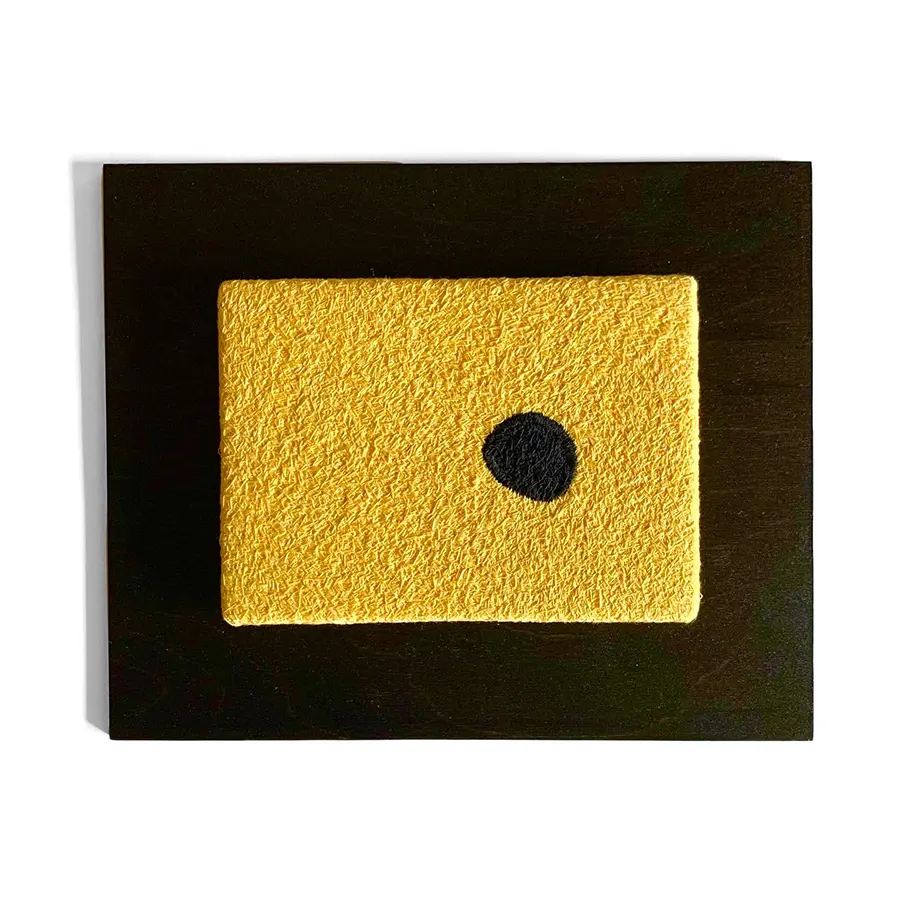
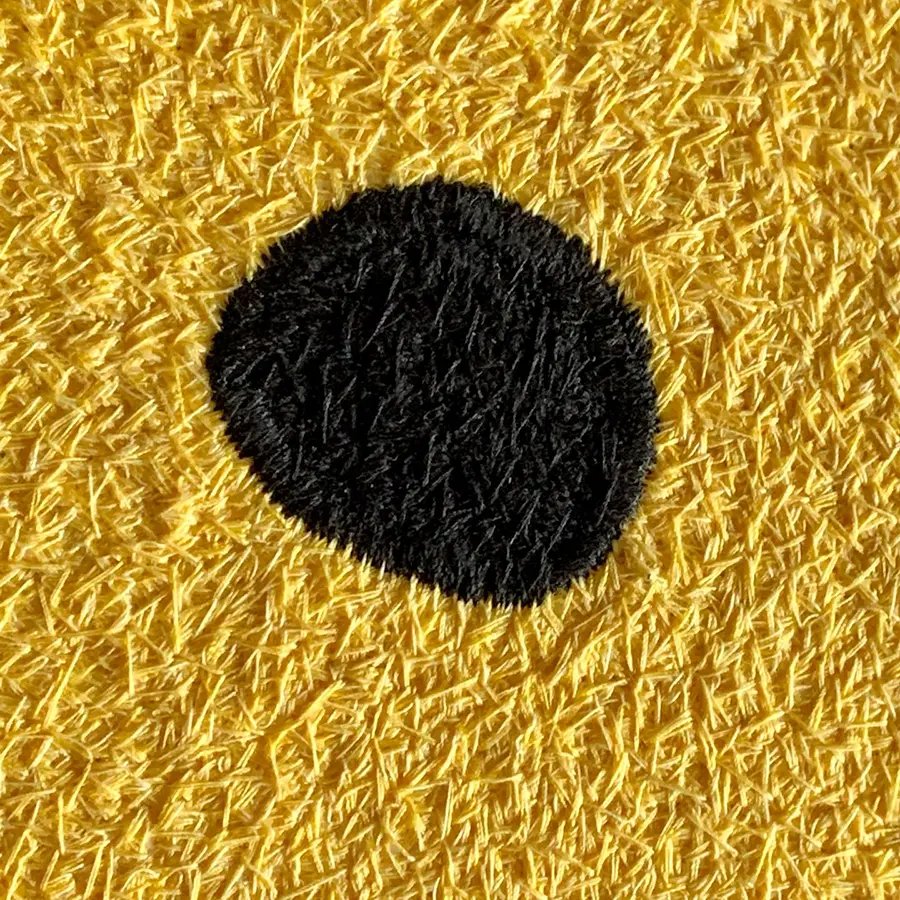
What influences your work?
This is a hard one – when I sit to create, I don’t think about the outcome, I pick one colour and sew, when I feel that it is the right time, I stop, pick a new coloured thread and continue to sew. There is no pre-decided colour palette or design. The experience of calmness and tranquillity as I create becomes the influence – the stitchings are perhaps an internal self-portrait.
That being said, there must be influences – the rural landscape where I live, my experience, my background and of course art history, it must all have influence on my choices in some way.

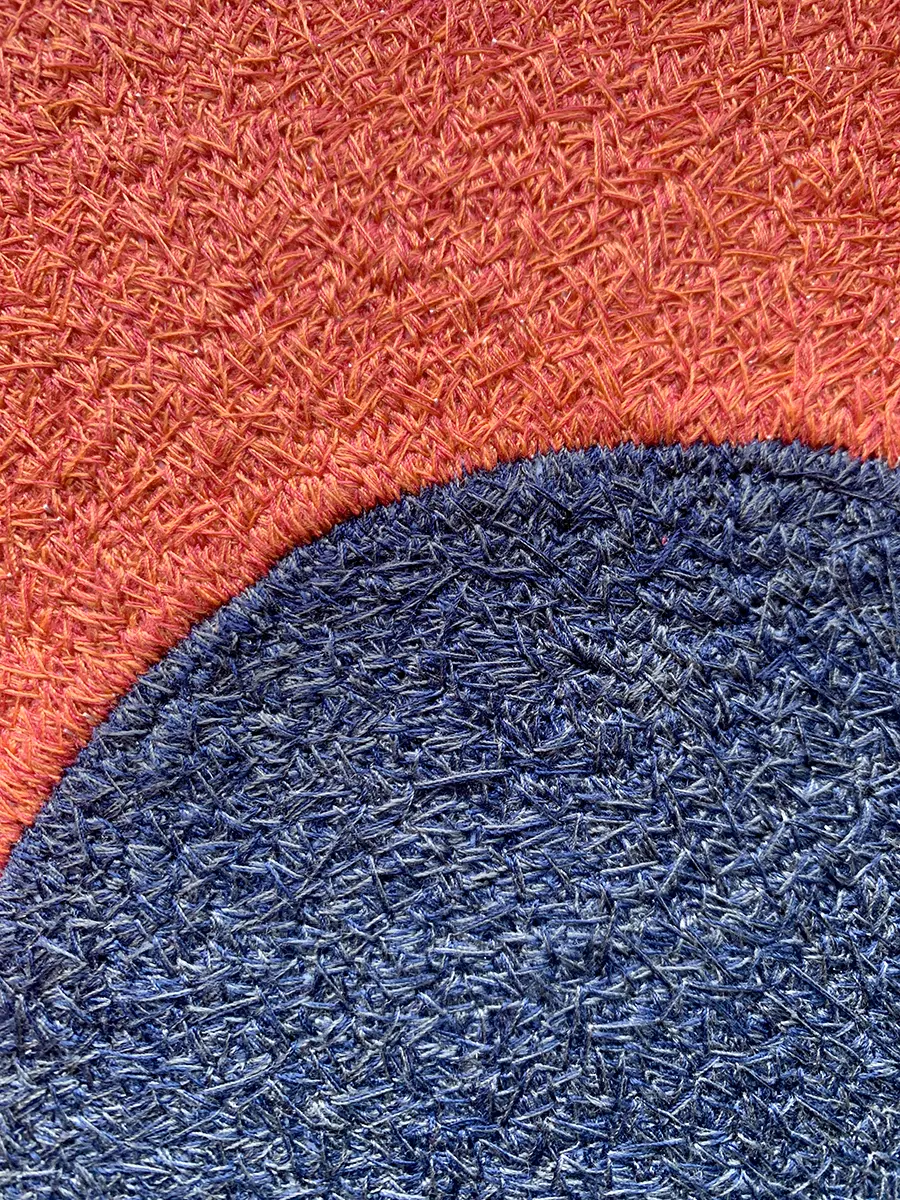
Are there any exhibitions or events you are planning?
I have gradually come to realise that the experience of making my art is important. The calmness and tranquillity that I feel when I make my art seeps into it, it informs it and directs the art. I think that people also sense this calmness and tranquillity when they see my art (or at least I hope they do).
What I am planning for this year is to experiment with different places to display my art to see if I can intensify the viewer’s experience. Places I have in mind are places where people go to find calmness and tranquillity, escapism and balance, places like country houses, follies in rural locations, abandoned abbeys or churches, castles – those types of settings. That’s the ambition– there is of course lots of planning underway to try and make this happen.
What is the best advice you received as an artist?
Try not to over think… and be authentic.

For more information, commissions and to purchase his artwork please visit JPR Stitch’s website: jprstitch.com
Follow JPR Stitch on Instagram for latest updates.
READ ANOTHER ARTIST STORY HERE.
Sign up to our newsletters and we’ll keep you in the loop with everything good and important going on in the worlds of design, art and independent retail.
By subscribing you agree to receive updates from ESTILA. We will not share your data with any third parties. Read our full privacy policy here.

We are a media and membership platform for design-led brands, interior designers and artists. Find latest industry news, insights, products, projects and contacts.
Join our “In the Loop” fortnightly design & art newsletter and never miss latest news from the industry.
CONNECT & LEARN
Copyright © 2015-2024 created and managed by STUDIO/ESTILA. All rights reserved | Terms & Conditions | Privacy Policy | Cookie Policy | Refund Policy